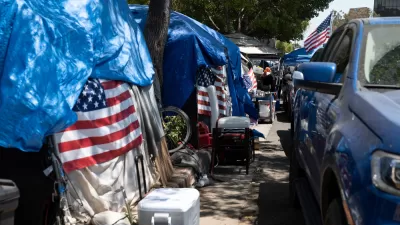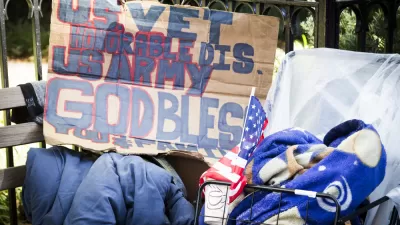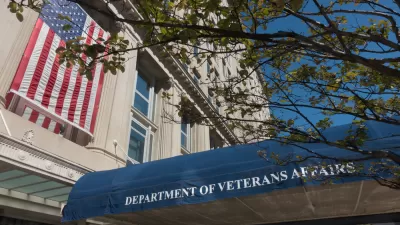Federal funding to end veteran homelessness has had a real impact, but a nationwide shortage of affordable housing could make its success temporary.
By Maria Foscarinis
In 2010, the Obama administration announced a Federal Plan to End Homelessness. Developed by the U.S. Interagency Council on Homelessness (USICH), the plan laid out an ambitious agenda focused on addressing the causes of homelessness. Called Opening Doors, the plan set four specific goals, one of which was to prevent and end homelessness among veterans in five years.
In November 2013, the Department of Housing and Urban Development (HUD), in its Point-in-Time (PIT) count of the homeless population, reported that 57,849 veterans were homeless on a given night in January 2013—a 24 percent decrease since 2009. By January 2014, two cities—Phoenix and Salt Lake City—had declared that they had ended chronic homelessness, a condition defined by HUD as presence of a disabling condition and three or more periods of homelessness within a year, for veterans.
These reports are striking, but should be viewed with caution. To start, the count is far from scientific, and has been criticized by me as well as others for gaps that include people in facilities who will have nowhere to go upon release and the “hidden homeless,” or individuals who are doubled up in homes or couch surfing.
Indeed, the veterans’ numbers may merit even more reservation: according to the plan and its subsequent updates, the baseline numbers against which progress is measured have undergone several revisions. HUD’s original 2009 PIT count number of 59,390 homeless veterans was later adjusted to 75,609; however, the fact sheet currently linked by the VA on its website states that in 2009 there were 107,000 homeless veterans—the number the plan stated it would adopt as its baseline. Additionally, the two cities’ results concern only the subpopulation of chronically homeless veterans...
FULL STORY: Without More Affordable Housing, Veteran Homelessness Will Return

Alabama: Trump Terminates Settlements for Black Communities Harmed By Raw Sewage
Trump deemed the landmark civil rights agreement “illegal DEI and environmental justice policy.”

Study: Maui’s Plan to Convert Vacation Rentals to Long-Term Housing Could Cause Nearly $1 Billion Economic Loss
The plan would reduce visitor accommodation by 25% resulting in 1,900 jobs lost.

Why Should We Subsidize Public Transportation?
Many public transit agencies face financial stress due to rising costs, declining fare revenue, and declining subsidies. Transit advocates must provide a strong business case for increasing public transit funding.

Wind Energy on the Rise Despite Federal Policy Reversal
The Trump administration is revoking federal support for renewable energy, but demand for new projects continues unabated.

Passengers Flock to Caltrain After Electrification
The new electric trains are running faster and more reliably, leading to strong ridership growth on the Bay Area rail system.

Texas Churches Rally Behind ‘Yes in God’s Back Yard’ Legislation
Religious leaders want the state to reduce zoning regulations to streamline leasing church-owned land to housing developers.
Urban Design for Planners 1: Software Tools
This six-course series explores essential urban design concepts using open source software and equips planners with the tools they need to participate fully in the urban design process.
Planning for Universal Design
Learn the tools for implementing Universal Design in planning regulations.
Caltrans
Smith Gee Studio
Institute for Housing and Urban Development Studies (IHS)
City of Grandview
Harvard GSD Executive Education
Toledo-Lucas County Plan Commissions
Salt Lake City
NYU Wagner Graduate School of Public Service





























